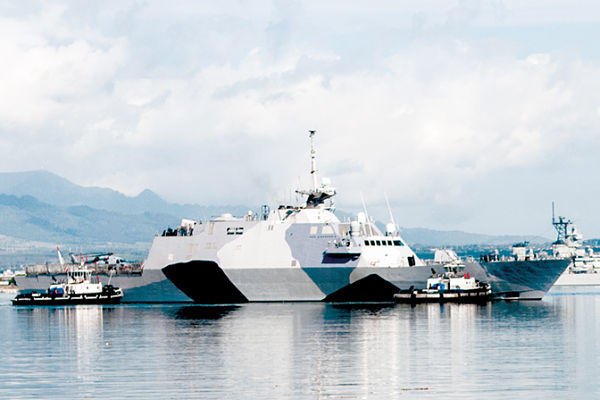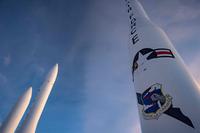The government's watchdog agency says Congress should freeze money for building new Littoral Combat Ships until the Navy can prove the program has righted itself.
The Government Accountability Office attacked the Navy's LCS effort, criticizing the service's premier modernization effort as being an over-budget, behind-schedule program and a platform that hasn’t proven it can do the missions it was designed to perform, according to a draft copy of a report scheduled to be released Tuesday July 23.
"The current LCS program is not the program envisioned over a decade ago," according to the report. "Initial cost estimates have been significantly exceeded; the Navy has not been able to field the ship or its planned capabilities much more rapidly than prior programs, as planned; and … the Navy will not be able to demonstrate that the LCS can meet the threshold capabilities defined in its requirements documentation with mission modules integrated with the seaframes until 2019."
The LCS class consists of two variants. The first of the mono-hulled USS Freedom variants was delivered in September 2008, and the first aluminum trimaran-hulled USS Independence variant was delivered in December 2009.
Each of the ships is designed to be fitted with special mission modules for surface warfare, mine countermeasures and anti-submarine warfare depending on the threats at hand.
The problem, the GAO maintains, is that the Navy's 2014 budget request includes money for four more seaframes, which locks the service into building 20 of the 52 planned LCS ships before important information is known about how the ship will be used, the report states.
Adm. Jonathan Greenert, the Chief of Naval Operations, has sponsored several technical studies that raise fundamental questions about whether the program, as envisioned, will meet the Navy's needs, according to the GAO. The results of these studies, which are expected to be completed over the course of the next year, may result in changes to the program, the GAO states.
"In the meantime, the acquisition of seaframes and mission modules continues, and the program office shows no signs of slowing its next planned set of seaframe contracts," the report states. "The apparent disconnect between the LCS acquisition strategy and the needs of the end user suggest that a pause is needed."
The GAO recommends several steps before the Navy puts more money toward the LCS: The service needs to complete ongoing technical and design studies and determine the cost of the results of those studies on the program. And the Navy needs to report to Congress on how systems commonality is going to be improved to reduce cost.
The GAO conducted this performance audit from April 2012 to July 2013. It points out that the program’s cost, production efficiency, and quality have started to improve, but schedule delays persist.
But a larger concern is that the Navy plans to make significant investments in seaframes and mission modules "before completing testing designed to demonstrate whether the integrated ship can perform its intended missions," the report states.
Just two days before the GAO report surfaced, the USS Freedom was forced back to its base in Singapore after experiencing propulsion problems while participating in international exercises.
The GAO also took issue with the Navy's plans to buy unproven mission modules.
"In addition to awarding contracts for almost half of the entire planned number of seaframes ahead of testing results, the Navy plans to procure more than half of the [Surface Warfare] and [Mine Counter-Measures] modules before it demonstrates they meet LCS's minimum performance requirements for their respective missions," according to the report.
Among the recommendations in the report is that the Pentagon submit a report to Congress, detailing the relative advantages of each seaframe variant for each of the three mission areas prior to the full-rate production decision and the award of any additional seaframe contracts.



























